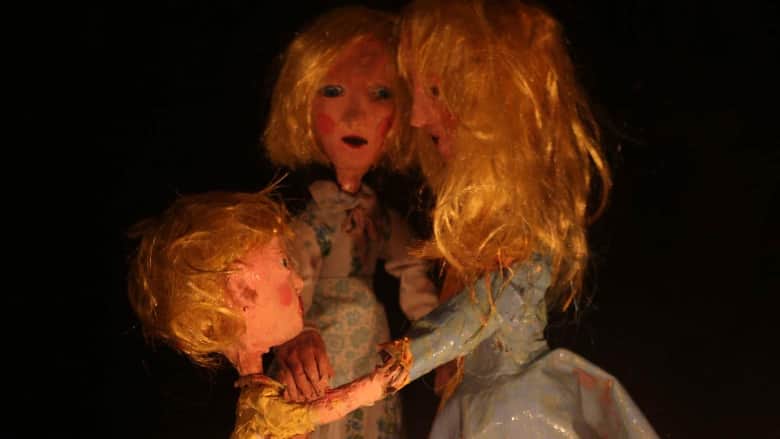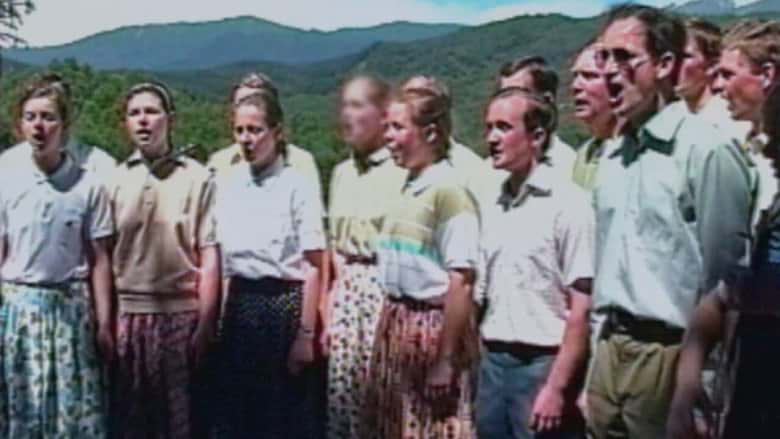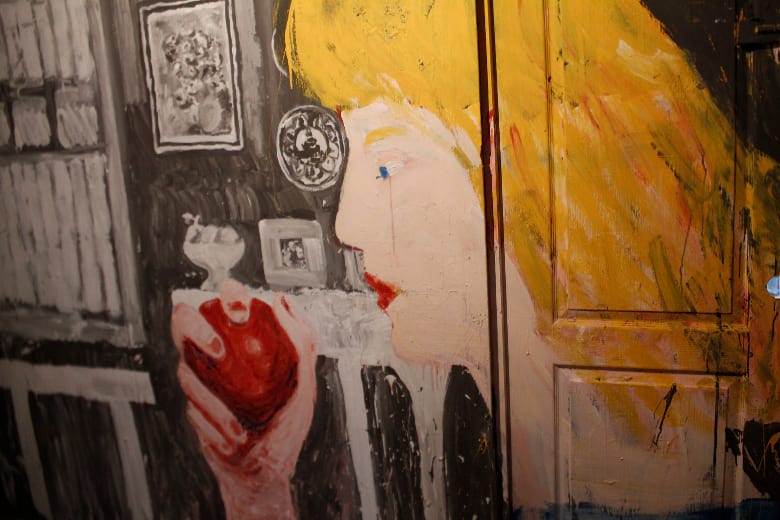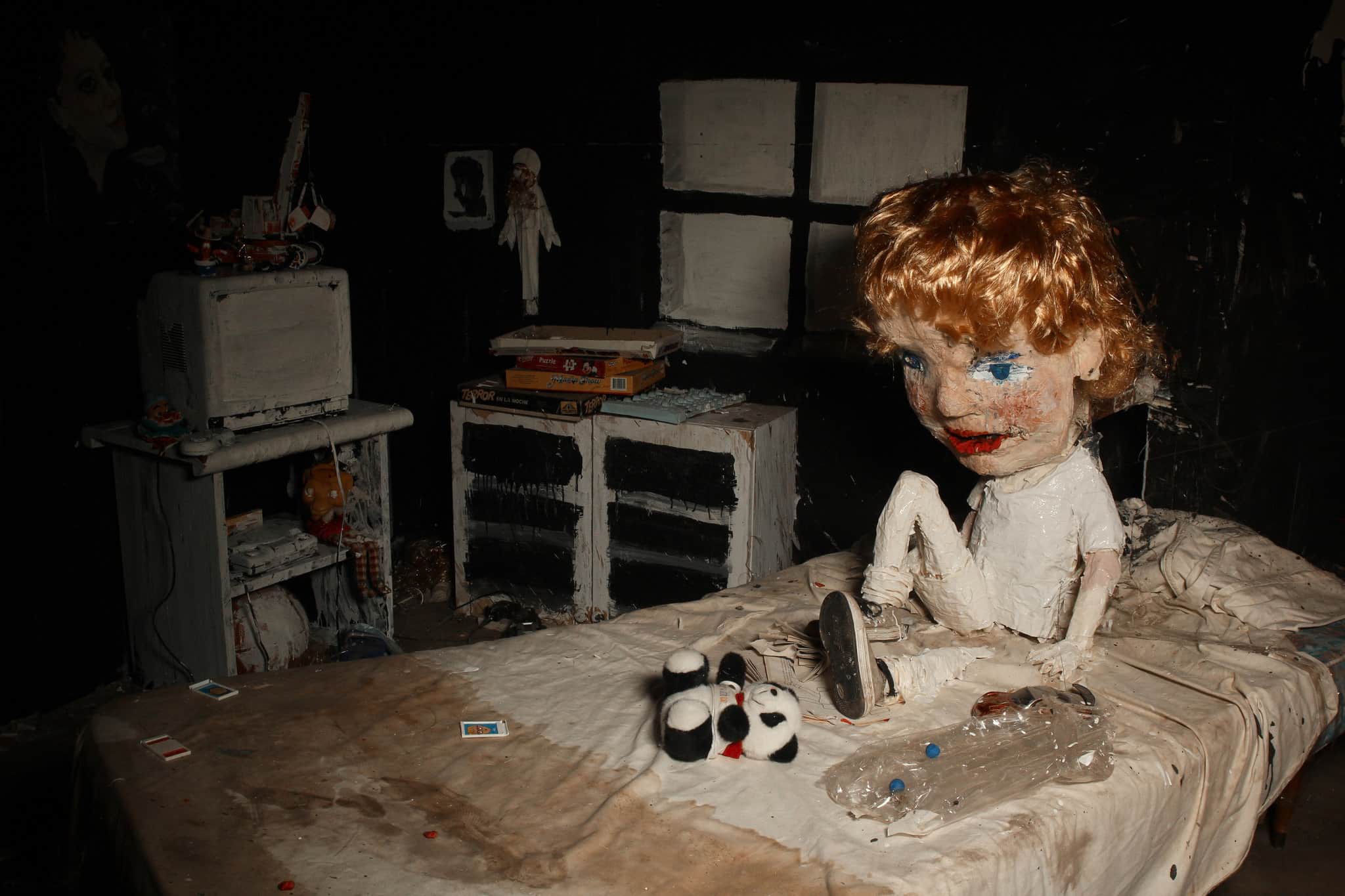Despite its reputation among outsiders for tired tropes and repeated story lines, horror is constantly reinventing itself. For every new iteration of Scream or The Conjuring, there’s a movie released into the underground that threatens to completely upend everything we know about horror. These films sometimes go onto become cult classics; other times they’re forgotten.
Time will tell how The Wolf House is remembered. But one thing is certain: this movie completely exists in its own unique, messed-up universe.
Directed by Chilean art duo Cristobal León and Joaquín Cociña as their feature film debut, The Wolf House (or La casa lobo, if you prefer the original Spanish) is both simple and mindbogglingly complex. It has a loose fairy-tale narrative with sparse dialogue and only a few characters, but it’s also rife with symbolism and historical allegory. And, of course, there’s also the indescribable art style.

In other words, we don’t fault you if you feel a bit lost after watching The Wolf House. The film provides very little context and almost no explanations. With the confusing nature of the movie in mind, let’s take a look at what you need to know to really understand the Chilean stop-motion film.
Oh, and fair warning: there may be some spoilers below. Read at your own peril.
Is The Wolf House Based on a True Story?
The plot of The Wolf House is far from concrete. It follows a girl named Maria who runs away from home alongside two pigs. She then finds a house in the woods and uses it to hide from a vaguely-described wolf that is seemingly stalking her.
That’s all familiar enough, but things take a turn for the bizarre when she starts using magical powers to turn the pigs into human children that she then looks after… and who ultimately try to eat her.
The narration is minimal, and the visuals make the events hard to follow. It’s unclear whether the events are actually happening or whether they’re just imagined by Maria.
But the unsettling prologue and epilogue of the movie suggest that the plot is somewhat based in reality. It presents to the audience a German village in rural Chile, a sort of rustic utopia where all the residents live in perfect harmony. With this established, the film acts as a story-within-a-story. Maria’s life is a tale being used to show that the German community is nothing like those awful rumors that you may have heard.
Wait a second. What rumors?
Those that don’t know much about Chile’s history may just assume that The Wolf House is inventing some kind of nondescript, creepy, cult-like backdrop for the movie. But the German community that the movie is based on is actually completely real. Called Colonia Dignidad, it operated for decades with two distinct and very dark reputations.
The History of Colonia Dignidad
The first era of Colonia Dignidad began when Paul Schäfer, a German man accused of child molestation, moved to Chile in 1961 with the goal of abandoning his past and creating a perfect commune focused on agriculture, spirituality, and purity. Needless to say, this unsettling origin story forebodes what was to come. Schäfer was joined by hundreds of other Germans emigrants – many of which were former Nazis. Some sources even claim that Josef Mengele, the infamous Angel of Death, could be found at Colonia Dignidad.
As the years went on, the Colonia grew and Schäfer became more like a cult leader. Men and women were separated from one another, and all members of the Colonia were forced to confess their sins to the almighty Schäfer. Those who ended up leaving the Colonia spoke about it as a place of authoritarian rule and severe isolationist principles. Unsurprisingly, many also reported incidents of torture and abuse.

The story of Colonia Dignidad doesn’t end there, though. As Chile descended into fascism under Augusto Pinochet’s rule in the 70s, things at the Colonia became darker and more violent. Rather than just being a cult in the woods, it was transformed into an internment camp for political dissidents. And, as Pincohet’s dictatorship proved, pretty much anyone could be labeled as a dissident and thrown into Colonia Dignidad’s underground prisons for torture.
Due to the mass amount of misinformation and secrecy surrounding much of Pinochet’s rule, the full extent of Colonia Dignidad’s atrocities aren’t really known. It’s thought that hundreds were murdered there, but it’s still debated. Schäfer’s level of involvement and cooperation is still mostly unknown.
This means that the answer to the question of whether The Wolf House is based on a true story is yes. Although the majority of the plot is fictional, the context of the Colonia Dignidad is very real. The history of this area of Chile being used first as a Nazi refuge and later as a torture camp hangs heavy over The Wolf House and serves as an important piece of the movie’s puzzle.
The House and the Wolf Explained
Knowing that the context behind the movie is real is helpful when analyzing two of the main symbols in the movie: the wolf and the house. (Who would have guessed that those would be the important touchstones of a movie called The Wolf House?) Both of them serve similar purposes as plot devices to establish a feeling of stress, but a deeper reading can be found when they are considered alongside the actual Colonia Dignidad.
Let’s talk about the wolf first. The wolf has long been a symbol of evil in literature, and on the surface, the wolf in this movie is obviously meant as a parallel to the Big Bad Wolf from the story of Little Red Riding Hood. He is a constant dark presence lurking outside of Maria’s house, and at one point there’s even a mention of huffing and puffing.
But, in the end, the wolf is revealed to not be exactly what he seems. When he “eats” Maria’s pig-children (yuck), they are actually just turned into trees. This idea of non-literal consumption suggests that the wolf isn’t literal either, instead just acting as a symbol of something less physical that largely exists in the minds of Maria and her children.

With the Colonia Dignidad as context, it makes sense to think of the wolf as guilt or even generational trauma. Despite Maria trying hard to run away from the Colonia and escape her past, the wolf at the door catches up with both her and her children in the end. Much like Paul Schäfer and the rest of the Nazis at the Colonia, Maria’s pursuit of purit was constantly at threat from her own guilt, and everything fell apart due to it at the end.
The house itself can be thought of in a similar way. In the literal story of The Wolf House, Maria escapes the Colonia and chooses to live in the house as a way of being free and happy. For her, the house represents a safe haven away from the Colonia. But, despite Maria’s goals, the house is quite similar to the Colonia Dignidad.
Rather than being pure, Maria’s house becomes violent and frightening, an idea that is underscored well by the rotting and shuddering visuals of the movie. This is exactly what happened to the Colonia Dignidad. Originally envisioned as a sanctuary and a place for a fresh start for disgraced German Nazis, it fell into the same authoritarian and violent practices that they had just escaped from. In this way, Maria’s house can be viewed as both an escape from the Colonia Dignidad as well as an allegory for it.
But what does it mean that the house can exist in such a paradoxical form? This can be read as emphasizing the circular pattern of human sin. No matter which way you view the house – either as a refuge from the Colonia or as the Colonia itself – it suggests that history is bound to repeat itself in a deadly cycle. Those who have that guilt or violence lurking in their past will always have it spring up again despite their best efforts to remove it. The fact that the house can be both the Colonia and the anti-Colonia at once demonstrates just how unavoidable this pattern is.
— FOUNDATIONS OF HORROR —
Further explore these subgenres and tropes. more>>
#Psychological horror | #That House is Scary

The powerful thing about The Wolf House, though, is that you don’t need to interpret it this way. Sure, the context of Chile’s history seems to explain the movie well enough, but cinema doesn’t always need to be a neatly wrapped package. The Wolf House is vague on purpose, and you can take it as a metaphor for anything that fits for you. The traumatic effects of isolation are incredibly prescient as a theme right now, so there’s no issue in understanding this movie outside of the Colonia and Nazi Germany. Our explanation is just one possible interpretation.
And maybe The Wolf House doesn’t even need an explanation. It might just be powerful for you because of the disturbing visual style that makes you squirm in your seat. Sometimes a horror movie doesn’t need to be more than that.
Last Updated on April 21, 2022.


1 Comment